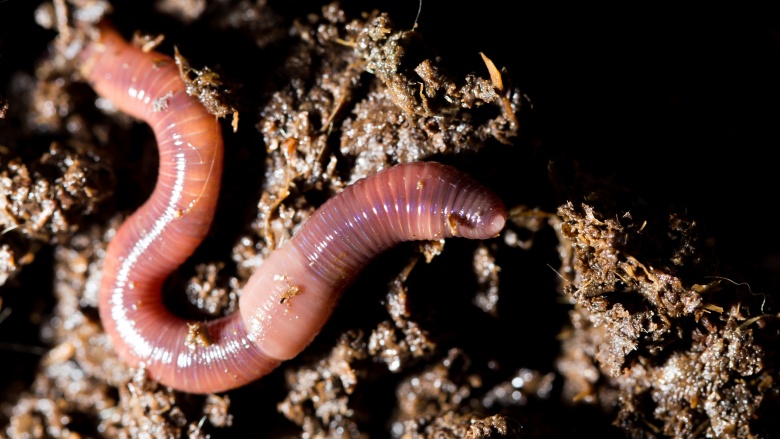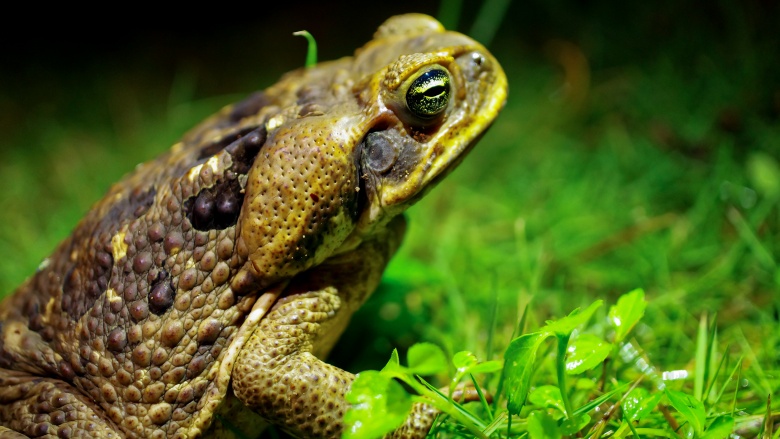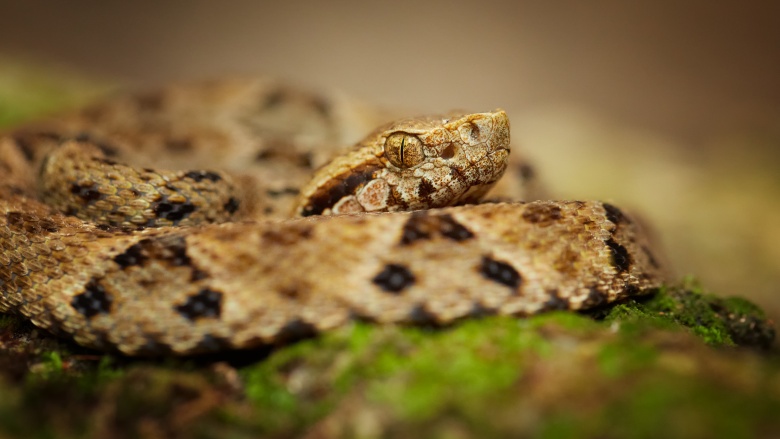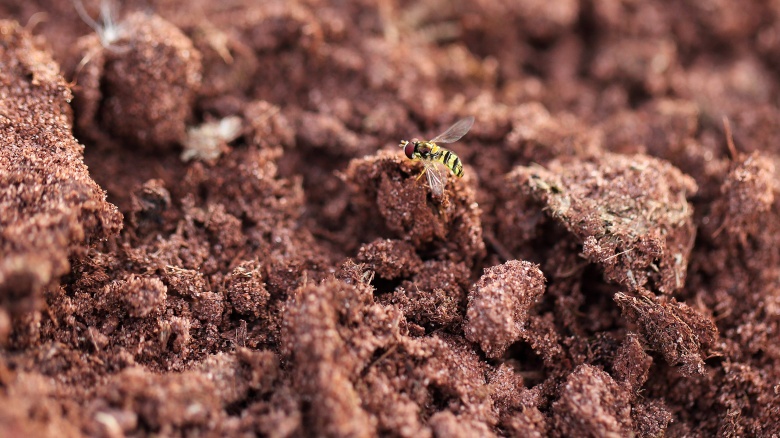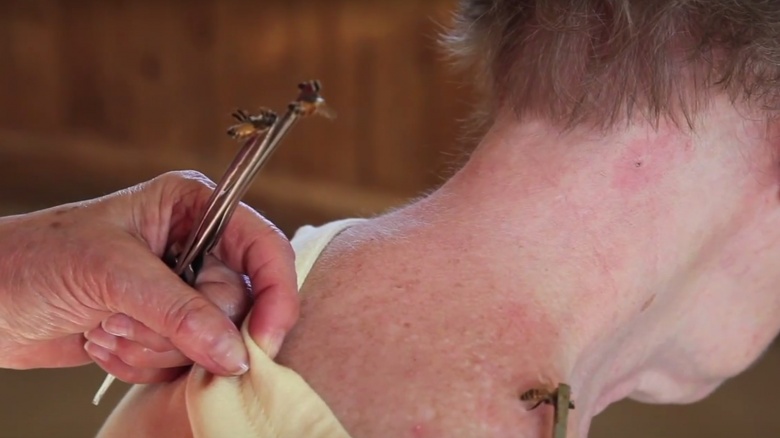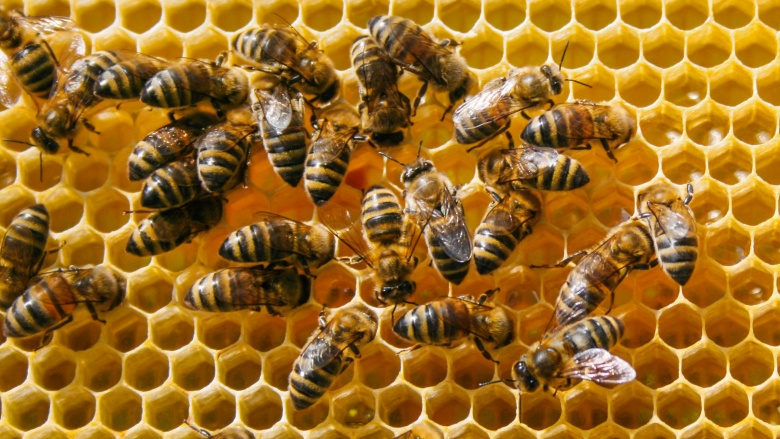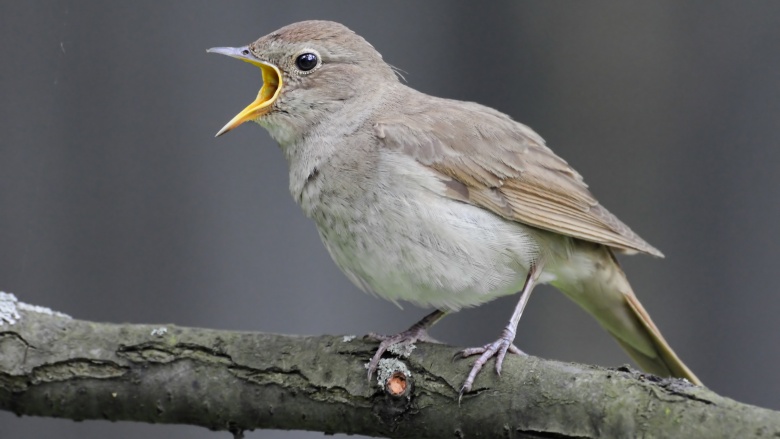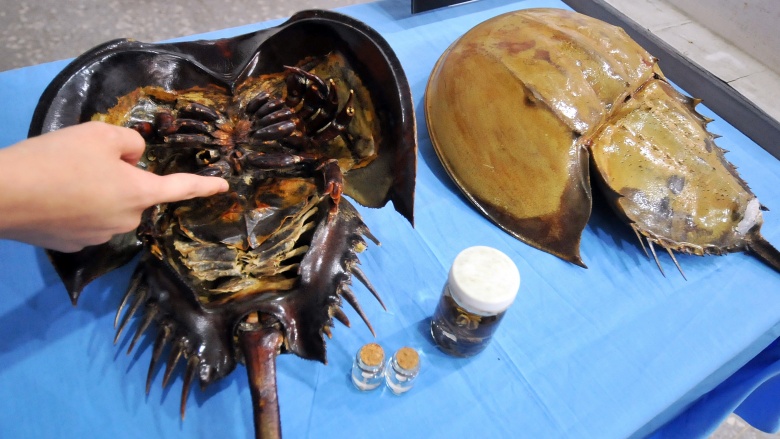Animal Body Parts Shockingly Great For Human Health
What if we told you that, if some snake bit you right now, you'll no longer want to stalk your ex on Facebook anymore? Okay, maybe not. But there are tons of unexpected legitimate medical uses for a snake, and a plethora of other weird health hacks comprised of disgusting parts of other animals too. After all, medicine has to come from somewhere, including the last place you'd expect: creepy animal parts.
Worms: the miracle cure
Before you tell your kids to stop playing in the dirt and get back to their important Flappy Bird record-breaking goals, you might want to reconsider. Dirt is filled with tons of microorganisms that are great for developing healthy immune systems, but slithering through the dirt and microorganisms are your new best friends: worms. According to research, worms are effective in preventing, and even curing, multiple sclerosis and other autoimmune diseases, and all you have to is (commence instinctive shuddering) ingest them.
It may seem insane to add more parasites to a malfunctioning digestive tract, but it's just creepy enough to cure autoimmune conditions. Imagine suffering from digestive inflammation, and a scientist in a white lab-coat hands you a shot of whipworm eggs, like what happened to one inflammation sufferer in 2007. Well, turns out, those little buggers hatched and cured his colitis. The problem of ulcerative colitis involves a lack of mucus production, which is exactly what those happy little worms are able to repair.
Hookworms have the incredible ability to cure autoimmune afflictions, including asthma, allergies, MS, and even diabetes. In order for the worms to do their magic, there's no invasive medical procedure or pill. All you have to do is walk around barefoot in an area where the tiny parasitic nematodes are wriggling around, and they penetrate your skin to enter your bloodstream. It may sound terrifying, but once the hookworms are in your bloodstream, they can easily become your best friend if you are suffering from an autoimmune disease, and hey, look at the bright side, you never have to be alone if your body is filled with worms.
Sleeping on animal fur can protect your baby from asthma and allergies
Is junior having a rough time sleeping through the night? Perhaps he'd sleep better if you could cuddle him with your fur. Don't have fur? Just buy some! See, in a baby's early stages of growing into a non-baby, they're developing immunities to diseases and allergens. Researchers have found that exposing your infant to animal fur during nap times will actually protect them from developing asthma later in life.
Scientists performed a series of actual studies, that we imagine would look like a tiny baby rap video. Just imagine the study for a second: It's 1998. 3,000 adorable babies were pampered and arranged to nap on mountains of the finest animal furs you probably don't have in your closet. (Sorry PETA, this was for science.) 55% of the babies slept on nothing but animal fur for the first three months of life. We're not sure yet whether or not they grew up to model their furs on Instagram, but the studies all concluded that babies exposed to fur in the first months of life were less likely to develop asthma and allergens.
Aside from the awesome health benefits, sleeping on fur makes your baby look like an adorable tiny billionaire tech mogul, so you may want to consider pimping that crib.
Licking frogs can increase cardiovascular strength and stamina
Licking frogs: it's not just for degenerates anymore. The Sapo frog is an adorable little creature indigenous to the Amazon rain forest, with gooey skin laced with pure magic. Shamans use the skins of the Sapo frog for luck while hunting, and for good reason. Frog licking might not be the party drug they warned you about in D.A.R.E., but the medicinal qualities of their skins can work wonders for you if you're more interested in Superman strength, spidey senses, the endurance of an Olympic athlete, and the anti-appetite of a billionaire socialite.
Research suggests that ingesting the skins of the Sapo frog can essentially give you superhuman strength, heightened senses, and a limited desire to eat or drink, making consumption of the frog's magical flesh ideal for long hunting trips. The Mayoruna Indians of the Amazon Rainforest ingest Sapo to turn themselves into super-warriors, and they're not just eating the frogs whole, or licking them either. The Mayoruna ritualize their Sapo consumption by actually tying up the little frogs and poking them with sticks, ostensibly torturing the precious venom out of them.
Next, the Mayoruna burn holes in their own flesh and rub the venom straight into their bloodstreams. After an hour of uncontrollable vomiting and diarrhea, their senses are piqued and they set off on their respective monkey hunts because, yeah, after torturing venom out of tiny frogs, they hunt monkeys, which they eat. A monkey feast is the only thing that could make this story any weirder.
The venom of the Brazilian pit viper is a natural ACE inhibitor
Frogs aren't the only reptiles out in the South American jungles with magical venom. The Bothrops Jararaca viper may seem terrifying to run into during a trip through the jungle, but its venom contains peptides that act as a natural ACE inhibitor. Cardiologists were so mystified by the healing properties of the Brazilian Pit Viper's venom, they actually use it in capotril, a cardiovascular medicine.
What's fascinated cardiologists for decades is the victim's blood's ability to mimic the effects of the venom. Because the venom acts as a natural ace inhibitor, blood vessels contract, resulting in a lowering of blood pressure. See, one bite from the terrifying Brazilian pit viper does a funny thing to your cardiovascular system. Rather than killing you, the natural ACE-inhibiting peptides mimic the venom and lower your blood pressure, but not always in the certain-death manner you might expect. For example, when a dog is bitten by one of these horrifying pit vipers, rather than going to Heaven (as all dogs typically do), the canine exhibits some curious reactions that are first delayed by eight hours, followed by a rapid heart beat and lethargy, as its blood vessels contract.
We're not saying that patients with high blood pressure all rush off to Brazil to play with snakes. Instead, take a good look at the active ingredients in your blood pressure medication, because every morning when you take your medicine, you might be absorbing some actual viper magic.
Animal dung ointment can cure tetanus
The last thing you'd want to rub onto a newborn baby might actually be the best thing you could do for them. Actual animal dung — yes, poopie, cocky, code brown, whichever euphemism you prefer — has medicinal qualities you'd never believe.
In one study out of Pakistan, rubbing animal dookie on newborn babies actually rubbed out neo-natal tetanus. Dung was applied to the umbilical wounds of infants shortly after birth, and voila! No more tetanus. This matters, because neo-natal tetanus, an infection caused by unhygienic newborn deliveries and umbilical cord detachments, is a leading killer in the developing world. When an infant is exposed to unhygienic deliveries resulting in neonatal tetanus, with a mortality rate of 70-100%.
Here's how the poop saves lives: Dung contains topical microbials — happy little microscopic creatures on the surface of the dung, that actually fight to destroy evil infectious germs. An infant born with the infection is exposed to these tiny microbrials, which then fight and destroy their tetanus, almost completely eliminating their risk of death.
Neonatal tetanus has been completely eradicated in India, thanks to this surprising treatment. Worldwide, neonatal tetanus once resulted in 800,000 infant deaths per year. Today, thanks to dung treatments, that number is down to 50,000.
Bee venom botox
What really happens when you get stung by a bee? After spewing out all of the worst profanities you can think of, your skin puffs up around the affected area, presenting a new location for you to direct your hysterical screaming.
But actually, the same reaction can be used intentionally on areas of your skin where you actually want some extra puffing. Beauty companies have begun capitalizing on this natural solution by extracting the venom and adding it to creams. However, in its purest form, bee sting therapy, formally known as "apitherapy," is an ancient practice where you basically let bees sting your wrinkled skin to puff out those pesky wrinkles.
Author of It's All Easy, 1998 MTV Movie Award winner for "Best Kiss," and Academy Award-winning actress Gwyneth Paltrow is a huge fan of this new treatment, so it must be super-posh and cool now. Traditionally, bee sting botox is performed at a salon, where you enjoy a massaging facial followed by bee venom extract being zapped into your face with various tools, but in her typical postmodern crunchy fashion, Paltrow told the New York Times she's actually been stung by live bees, praising the ancient practice of apitherapy.
Traditional apitherapy, as you probably already deduced, is a bit more hardcore than the modern spa alternatives. The ancient practice praised by Paltrow involves a practitioner using long tweezers to grab onto actual honey bees, allowing them to individually sting your face as much as 80 times per session. The venom rejuvenates your now swollen-skin, eliminating all of those pesky wrinkles. This ancient practice gives a whole new meaning to Queen B's "Pretty Hurts."
But getting stung by a swarm of bees isn't just an unconventional beauty treatment...
Bee stings can also cure Lyme disease and HIV
That's right: a bee's magical venom can actually cure Lyme disease and obliterate HIV cells too.
After suffering from Lyme disease for years, Ellie Lobel was attacked by a swarm of bees. As it turns out, this was the best thing that could have ever happened to her. After the attack, Lobel's Lyme was completely cured — the debilitating neurological fatigue and muscle pain associated with the disease was nowhere to be found. What's more, after several days of pain in the affected area, Lobel recalls miraculously "coming out of her brain fog" that was initiated by her disease, and could finally think clearly for the first time since before her diagnosis.
Melittin is the peptide in bee venom responsible for the burning sensation you feel when you get stung, as it hits your nerves like a bolt of lightning while burning holes in your cell membranes. In this case, the venom penetrated Lobel's cells that were plagued by Lyme bacteria, and destroyed them.
These amazing nanoparticles don't just destroy Lyme disease and flatten wrinkles either. It was recently discovered that bee venom can obliterate HIV cells as well. According to research from Washington University School Of Medicine, getting stung by a bee could actually cure HIV, thanks again to wonderful melittin. Basically, when melittin permeates the skin and burns into your cells, it can also slice right into HIV and suffocate it without negatively impacting healthy cells, aside from the obvious "Ouch, [profanity redacted], I just got stung!" negative reaction we all utter.
In short — perhaps you may want to re-evaluate your irrational fear of bees. They could save your life someday.
Nightingale poop facials
An old, seemingly nonsensical cliché has always been that becoming a bird toilet is good luck. Perhaps this is to alleviate those awkward moments or make your pals with obvious bad luck feel better, but surprisingly, certain birdie turdies can actually work wonders on your skin.
As it turns out, ancient Japanese geishas had a disgusting secret to their doll-like complexions. Yeah, they were rubbing bird poop all over their faces. Feces from a nightingale, which are praised as being a "fertilizer for the face," actually contain enzymes that not only exfoliate your skin, but also annihilate dead skin cells and repair discoloration, leaving you fresh-faced and pure. Your mind, though, after realizing you just rubbed bird poop all over yourself, will presumably be much less pure.
You may assume that the beauticians are extracting the active ingredient to add to pretty little bottles of rose scented creams, but nope. In modern treatments, the bird waste is sanitized and mixed with rice bran before they plop it on your face. There's no way around it: want a poop facial? Gotta deal with real poop.
Horseshoe crab blood
You know those smelly flying saucer crabs that wash up on the beach en masse? Every single injection you've ever had in your entire life was sanitary because of these bizarre creatures.
Yep, horseshoe crabs actually serve a shockingly critical purpose for humans, aside from terrifying you and your loved ones at the beach. The bizarre bright blue blood of a horseshoe crab is basically magic, and essentially how they've survived for the past 450 million years. The blood of a hermit crab is an evolutionary miracle, consisting of impossibly resistant antibiotic qualities and clotting proteins. For one, it has no white blood cells to fight infections, but rather hemocyanin, which is copper-based and can slay infections like we take out the trash.
The medical community has been using horseshoe crab blood since the 1970s to test for contamination, and it could probably save your life too, for its insane ability to clot and avoid bacterial infections. This makes the blood insanely valuable — just one gallon can be worth up to $60,000, making the horseshoe crab blood industry a $50 million a year business. Over 600,000 horseshoe crabs are caught each year to be harvested for blood.
But if we're trapping over half a million of these critters a year, couldn't there be consequences? Yep. Turns out, the population of these blood sacks has been steadily decreasing every year. According to Endangered Species International, the crabs are not yet formally endangered, but threatened, meaning they're on their way to the endangered list if we're not careful. And we better be careful — extinction of the horseshoe crab could ultimately lead to our extinction, due to our no longer being able to use them to test and develop life-saving medicines. So, if you see one washed up at the beach, leave him alone and maybe say thank you. They might be too busy getting eaten by a seagull to acknowledge you, but that's OK. They feel you.

